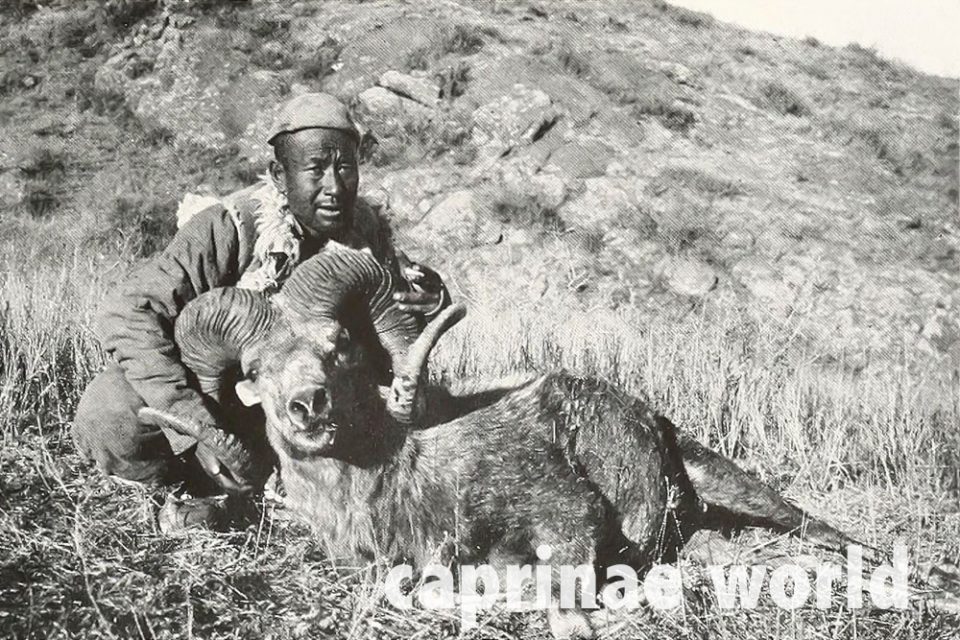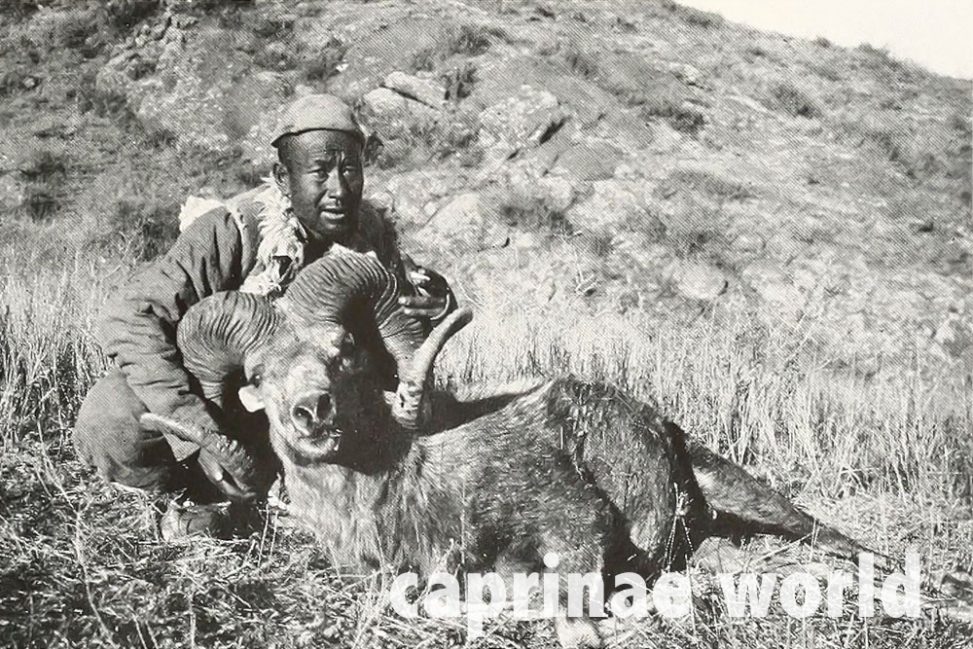The Northern Chinese Argali or Shansi Argali is an extinct subspecies of Ovis ammon. According to IUCN no records have been identified based on literature reviews, interviews, and field work for several decades.
Names
English: Northern Chinese Argali, Shansi Argali, Jubata Argali [1]
French: Argali du nord de la Chine [1]
German: Nordchinesischer Argali, Shansi Argali [1]
Spanish: Argali de Shansi [1]
Other (putative) scientific names and synonyms
1873 Ovis argali mongolica Severtzov [1]
1876 Ovis jubata Peters [1]
1919 Ovis comosa Hollister [1]
1922 Ovis a. commosa Sjölander [1]

Taxonomy
If O. a. jubata is a valid subspecies at all is disputed: Wilson and Reeder (2005) and Fedosenko and Blank (2005) recognize nine subspecies of O. a. ammon – including O. a. comosa (= jubata). Geist (1991) considered that jubata has precedence over comosa. Within China, some authors have recognized additional subspecies, but did not recognize O. a. jubata. Mitchell and Frisina (2007) recognized jubata again. And also the International Single Species Action Plan for the Conservation of Argali under the Convention on Migratory Species (CMS 2014) follows the IUCN SSC Caprinae Specialist Group and recognises O. a. jubata. However more research is required to clarify the taxonomy. [2]
(Former) distribution
Argali are patchily distributed in Inner Mongolia (Bu et al. 1998), but Harris et al. (2009) found that argali have been lost from at least two areas considered to contain remnant populations during the 1990s by Wang and Schaller (1996): the Helan Shan and the Lang Shan mountain ranges. Disturbance and habitat degradation in a 3rd area, the Mazong Shan range, has likely caused the disappearance of argali there as well; small numbers of argali persist in the Yabrai (Yubulai) Shan range, the Hada Shan area and the Erenuo’ersumu region of Sunitezuo Banner. They are historically known from parts of Shaanxi and Ningxia Provinces (in the Helan Shan, which forms Ningxia’s western border with Inner Mongolia), but recent records suggest that they no longer occur in either of these provinces (Liu Zhensheng, Gong Minghao pers. comm., 2008). These animals are variously described as O. a. darwini or O. a. jubata. Harris et al. (2009) believe that O. a. jubata, as a subspecies with unique adaptations, has become extirpated and they did not know of any credible reports of argali from south of the Yellow River within recent historical times. [2]
General description
Northern Chinese Argali rams were relatively large sheep. The horns were described as more massive and with more substantial horn cores than the northern hodgsonii type occurring further south in Gansu and Qinghai. – In an evaluation of mean combined measurements (length plus circumference), Northern Chinese Argali were only slightly below Gobi Argali. [1]
Has O. a. jubata’s habitat led to particular morphological adaptions? The hills of Nei Mongol AR (Daqin Shan and Lan Shan), as well as those further south and east in Shanxi and Hebei, are characterised by gentler topography and more mesic vegetation (with a well-balanced supply of moisture) than the isolated mountains of the Gobi Desert. This raises the possibility that O. a. jubata may have represented not merely a distinct morph (Geist 1991) but a particular adaption within the O. ammon group (Harris and Wingard 2008). [1]
While Lydekker (1898:180) highlighted certain pelage similarities between hodgsonii and jubata, Geist (1997, pers. comm. to Franco) says that Northern Chinese Argali in fall/winter were quite different from other argali subspecies: „Shansi rams in winter fur show a sharp segregation of the fields of white and black hair with distinct, well bordered stripes down the fore and hind legs. The rump patch is primarily white, well delineated and does not surround the tail. The tail has a dark dorsal stripe as continuation of the mid dorsal line. The white belly and dark flank hair segregate fairly sharply. There is a dark, though not pronounced flank spot ahead of the hind legs. The ruff is restricted to the anterior part of the neck and varies from yellow-brown to light gray. There is elongated hair on the dorsal line of the neck down to the shoulder.“ [1]
Specimens of Northern Chinese Argali are kept in major American collections [1]: Field Museum of Natural History (FMNH), Chicago; American Museum of Natural History (AMNH), New York; National Museum of Natural History (NMNH), Washington.
Literature Cited
[1] Damm, Gerhard R. and Franco, Nicolás, 2014: The CIC Caprinae Atlas of the World – CIC International Council for Game and Wildlife Conservation, Budakeszi, Hungary in cooperation with Rowland Ward Publications RSA (Pty) Ltd., Johannesburg, South Africa.
[2] Reading, R., Michel, S. & Amgalanbaatar, S. 2020. Ovis ammon. The IUCN Red List of Threatened Species 2020: e.T15733A22146397. https://dx.doi.org/10.2305/IUCN.UK.2020-2.RLTS.T15733A22146397.en. Accessed on 03 July 2023.


Dongchen Lang
Hi, that’s a great article! I just have visit some place to finding Argali in Inner Mongolia, and I would share some information with you.
Some zoologist insist the population in Yabrai is jubata subspecies, but it is darwini one actually by comparing it’s secondary rump patch (also in Hada, Erenuo’er sumu, the population seems stable now). The identify problem is due to former hunting management, manager believed if considered it as a unique subspecies it would be better when selling license.
Daqing mountain, near Hohhot (used to call as Kwei Hua Ch’eng) may be the north boundary of this subspecies, cross the mountain north, is darwini with more drier weather; south is jubata with a humid environment.